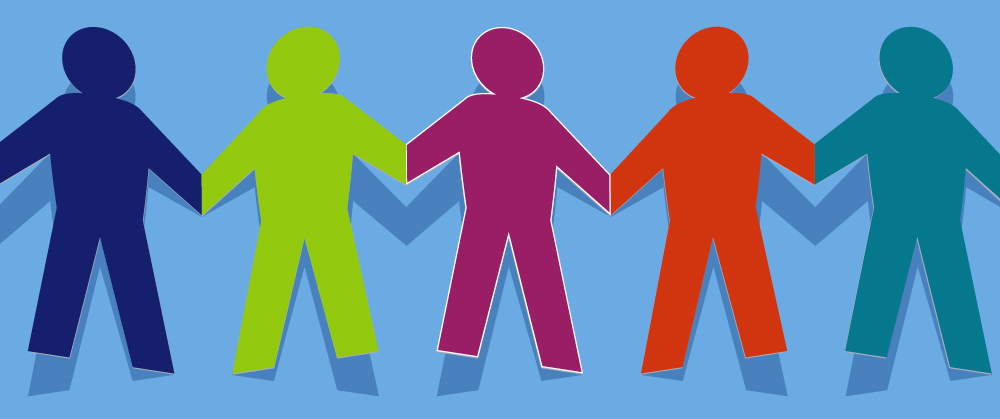The prevalence of autism spectrum disorder (ASD) in the United States continues to grow. According to a recent report by the Centers for Disease Control and Prevention (CDC), as many as 1 in 54 children has received a diagnosis of ASD (Maenner et al., 2020).
This year, the ASHA Journals are once again recognizing Autism Acceptance Month (also known as Autism Awareness Month) to inform and encourage speech-language pathologists (SLPs) and researchers working with patients who have ASD. According to ASHA’s Practice Portal, SLPs “play a central role in the screening, assessment, diagnosis, and treatment of persons with ASD” (ASHA, n.d., “Roles and Responsibilities,” paragraph 1). Below, we highlight some recent articles of interest to researchers, clinicians, or anyone who knows someone diagnosed with ASD.
The January issue of LSHSS featured a forum titled Literacy in Autism—Across the Spectrum. Children with ASD often have high literacy needs, but the connection between ASD and literacy isn’t completely clear. The six articles in this forum provide clinical implications for anyone involved with the assessment or treatment of children on the autism spectrum.
LSHSS Forum Focuses on Literacy in Autism
Guest editors Marleen F. Westerveld and Jessica Paynter write, “The question that drives our research efforts is why this population is at increased risk of literacy difficulties compared to their peers without ASD, with the ultimate aim of delivering early, targeted, individualized intervention to those who need it” (Westerveld & Paynter, 2021, p. 149). You can read our previous blog post about this forum here.
More Articles From Across the ASHA Journals
A Distinction Between Linguistic and Social Pragmatics Helps the Precise Characterization of Pragmatic Challenges in Children With Autism Spectrum Disorders and Developmental Language Disorder: Children with ASD and those with developmental language disorder (DLD) often face issues with pragmatics. This study compares children with ASD, children with DLD, and children with neurotypical development on two different pragmatics tasks.
Instruction Using Augmentative and Alternative Communication Supports: Description of Current Practices by Speech-Language Pathologists Who Work With Children With Autism Spectrum Disorder: For students with ASD who use augmentative and alternative communication (AAC), training in the chosen method is key. This article looks at how SLPs provide instruction on AAC systems and the role that ASD plays in the instruction.
Linking Peer-Mediated Interventions to Address Conversational Difficulties in Adolescents With Autism: Peer-mediated intervention is an established evidence-based practice for children with ASD, but little research has been conducted on peer-mediated intervention in high school students. This article provides examples of peer-mediated intervention in a high school setting.
Using Visual Supports to Facilitate Audiological Testing for Children With Autism Spectrum Disorder: Hearing loss and ASD often present with overlapping symptoms in children. This article discusses (a) the challenges that audiologists face when testing and interpreting clinical data for children with ASD or suspected ASD and (b) the use of visual supports to facilitate an assessment.
Autism in Girls
Autism is diagnosed up to four times as often in boys as it is in girls (Frazier et al., 2020). The reasons for this are unclear, but the fact remains that research into girls with autism is currently lacking because researchers have a smaller cohort to study. Below, we highlight two recent articles on girls with autism.
A Case Study: Unique Challenges of an Adolescent Female With Autism Spectrum Disorder: In this study, the authors looked at the clinical efficacy of combining self-management strategies and a social thinking approach to address social performance and executive function of an adolescent female with ASD.
Social Communication and Structural Language of Girls With High-Functioning Autism Spectrum Disorder: In this article, the authors examine social communication and structural language in girls with high-functioning ASD.
As ASHA’s Practice Portal states, “Individuals with ASD report a desire to have friendships and relationships, despite their social communication challenges” (ASHA, n.d., “Communication Partners” section, paragraph 2). We hope that by reading these articles, learning more about ASD, and recognizing Autism Acceptance Month in your own way, you can become inspired to help children with ASD reach these social and relational goals.
References
American Speech-Language-Hearing Association (n.d.). Autism (Practice Portal). https://www.asha.org/Practice-Portal/Clinical-Topics/Autism/
Frazier, K. F., Collier, J., & Glade, R. (2020). A case study: Unique challenges of an adolescent female with autism spectrum disorder. Perspectives of the ASHA Special Interest Groups, 5(1), 314–325. https://doi.org/10.1044/2019_PERSP-19-00132
Maenner, M. J., Shaw, K. A., Baio, J., Washington, A., Patrick, M., DiRienzo, M., Christensen, D. L., Wiggins, L. D., Pettygrove, S., Andrews, J. G., Lopez, M., Hudson, A., Baroud, T., Schwenk, Y., White, T., Robinson Rosenberg, C., Lee, L.-C., Harrington, R. A., Huston, M., Hewitt, A., . . . Dietz, P. M. (2020). Prevalence of autism spectrum disorder among children aged 8 years—Autism and Developmental Disabilities Monitoring Network, 11 sites, United States, 2016. Morbidity and Mortality Weekly Report, 69(4), 1–12. https://doi.org/10.15585/mmwr.ss6904a1
Westerveld, M. F., & Paynter, J. (2021). Introduction to the forum: Literacy in autism—Across the spectrum. Language, Speech, and Hearing Services in Schools, 52(1), 149–152. https://doi.org/10.1044/2020_LSHSS-20-00124







